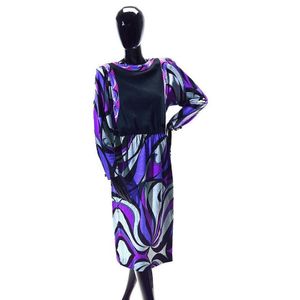Art Deco Meissen Porcelain Harlequin Figure
You must be a subscriber, and be logged in to view price and dealer details.
Subscribe Now to view actual auction price for this item
When you subscribe, you have the option of setting the currency in which to display prices to $Au, $US, $NZ or Stg.
- Circa - A Latin term meaning 'about', often used in the antique trade to give an approximate date for the piece, usually considered to be five years on either side of the circa year. Thus, circa 1900 means the piece was made about 1900, probably between 1895 and 1905. The expression is sometimes abbreviated to c.1900.
- Harlequin - The Harlequin is a character from the Italian commedia dell'arte, a form of theatre typified by characters wearing masks, and acting out unscripted performances. There are corresponding characters in the French and Spanish theatre.
In dress, he is characterised by his hat, mask, and colourful diamond-pattern tunic.
Columbine is the mistress of Harlequin, and the wife of Pierrot. - Art Deco Period - The Art Deco period was a cultural movement that emerged in the 1920s and 1930s, and was characterized by its emphasis on modernism, luxury, and elegance. The name "Art Deco" comes from the Exposition Internationale des Arts Décoratifs et Industriels Modernes, a large exhibition held in Paris in 1925 that showcased the latest trends in decorative arts.
Art Deco was a reaction against the ornate and elaborate styles of the previous era, and reflected a new modern sensibility. It was characterized by streamlined, geometric shapes, bright colours, and the use of new materials such as chrome, glass, and Bakelite. Art Deco designers sought to create a sense of luxury and sophistication, often incorporating expensive materials such as ivory, marble, and rare woods.
Art Deco had a significant impact on a wide range of artistic fields, including architecture, fashion, graphic design, and interior design. Some of the most iconic examples of Art Deco architecture include the Empire State Building in New York City, the Hoover Building in London, and the Palais de Chaillot in Paris.
The Art Deco period came to an end in the 1940s, as World War II and changing cultural trends led to a shift in artistic styles. However, Art Deco remains an important influence on design and art, and continues to be celebrated for its modernist sensibility and glamorous aesthetic.
This item has been included into following indexes:
Visually similar items

A Japanese Kutani figure of a geisha, late Meiji period (1868-1912). The poised figure of the geisha holding a bowl before her, wearing a black kimono decorated in a typical Kutani palette including iron red and emerald and having simple gilt highlights; u

Three 1980's Pucci garments. A long sleeved woolen dress, hand painted long sleeved cotton top with giraffe motif by Muratori for Emilio Pucci. And a cotton shirt in swirl patterned print (medium)

A large Victorian Staffordshire figure of 'Louis Napoleon', circa 1860, the press moulded glazed earthenware figure in a bright cobalt glaze with gilt enrichments depicting Napoleon III in military attire, title in relief to the base, height 41.5 cm

A pair of Lladro Eskimo figures, 'Daisa, height 26 - 32 cm
